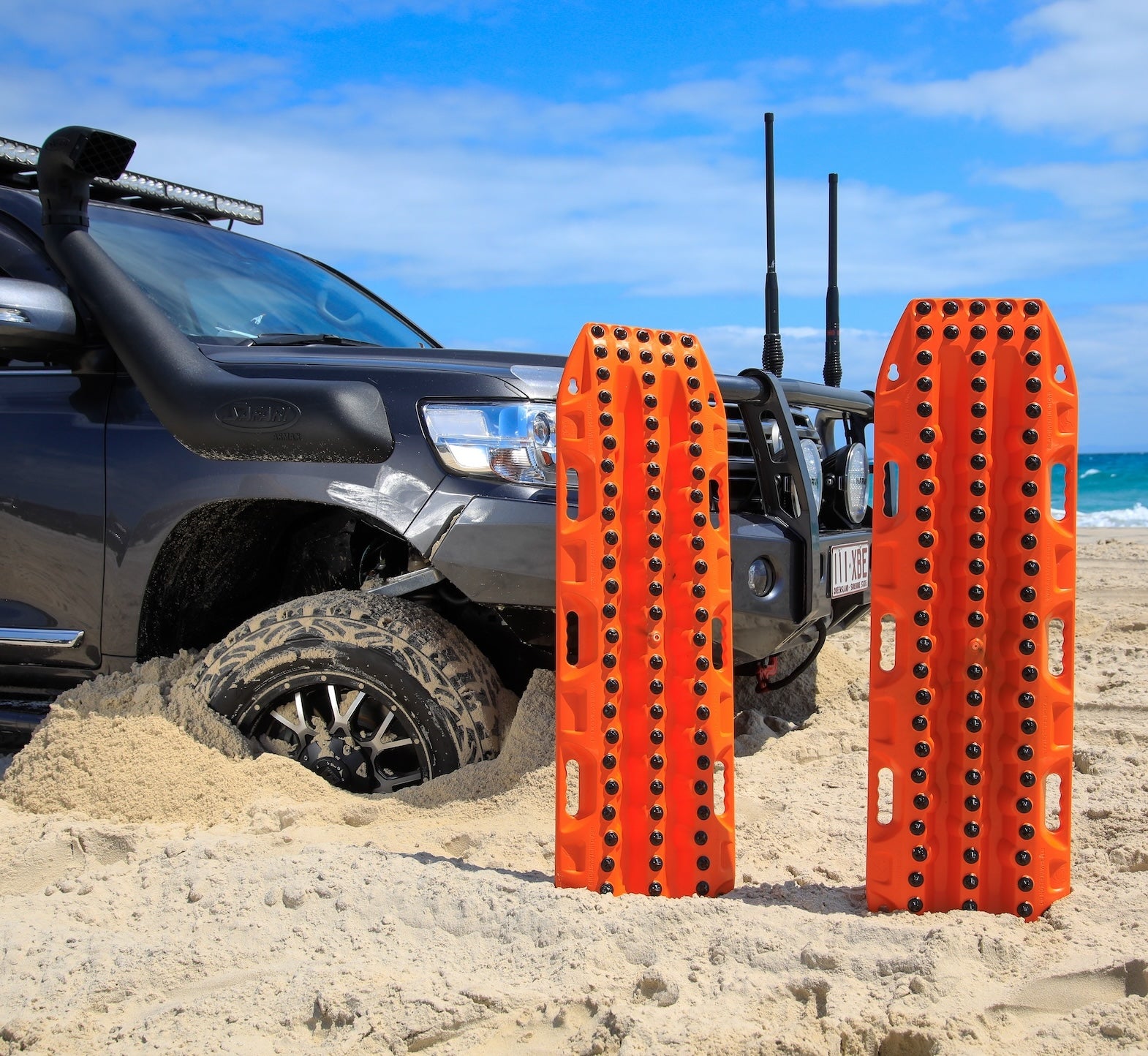The Suzuki Jimny, with its compact design and robust capabilities, has carved a niche for itself in the automotive sector for over half a century. Originating from Suzuki's innovative approach and dedication to quality, the Jimny's evolution from its inception to its present-day iteration offers a fascinating insight into automotive design, market dynamics, and consumer preferences. This article aims to provide an in-depth exploration of the Jimny's trajectory, emphasizing its design evolution, market challenges, and its broader impact on the automotive world.
Origins and Early Days
Kei Cars: Japan's Unique Solution
Post World War II, Japan was in a phase of reconstruction and economic recovery. The nation faced challenges like limited resources, a devastated infrastructure, and a need for affordable transportation for its populace. It was against this backdrop that the concept of Kei cars, or "light automobiles," emerged.

For many Japanese citizens during the post-war era, traditional cars were financially out of reach. There was a pressing need for a more affordable alternative. Kei cars, with their smaller engines and compact design, were less expensive to produce, leading to lower purchase prices. This made them an accessible option for a broader segment of the population.
Urban Infrastructure:
Japan's urban areas, characterized by narrow streets and limited parking spaces, posed unique challenges for transportation. Larger vehicles were not only impractical but also inefficient in such settings. Kei cars, with their compact dimensions, were perfectly suited to navigate the tight confines of Japanese cities, making them a practical choice for urban dwellers.
The Japanese government played a pivotal role in promoting Kei cars. Recognizing the benefits of these vehicles, both in terms of economic accessibility and suitability for Japanese roads, the government introduced favorable regulations. These included tax breaks, reduced insurance premiums, and relaxed parking regulations. The engine capacity for Kei cars was also strictly regulated, starting at 150cc and gradually increasing over the years, with the current limit set at 660cc.
Environmental Considerations:
Japan, being resource-limited, has always been conscious of its energy consumption. Kei cars, with their smaller engines, consumed less fuel, aligning with the nation's push towards energy efficiency. Their reduced emissions also contributed to lesser environmental impact, especially in densely populated urban areas.
Cultural Significance:
Beyond the practical and economic aspects, Kei cars hold cultural significance in Japan. They symbolize the Japanese ethos of maximizing efficiency within limited resources. Their design and functionality reflect the nation's values of simplicity, practicality, and harmony with the environment.

The LJ10's Inception:
Given this context, Suzuki's introduction of the LJ10 in 1968 was a strategic move. Designed to cater to the Kei car market, the LJ10 was more than just a vehicle; it was a solution tailored for Japan's unique topographical and urban challenges. Powered by a 360cc two-stroke engine, it was not a powerhouse by any means. However, its agility, combined with its off-road capabilities, made it stand out. The design was pragmatic, emphasizing durability and functionality. The ladder-frame chassis, leaf-spring suspension, and four-wheel drive were not just design choices but were integral to its off-road identity.
Transition and Growth: The 1980s and 1990s
SJ Series Evolution:
The transition from the 1970s to the 1980s marked the introduction of the SJ series. The SJ410 was a significant departure from the LJ10, featuring a 1.0-liter four-stroke engine. This change was not just about power; it was about adapting to global markets and their varied requirements. The SJ413 further refined this approach with a 1.3-liter engine and additional features, making it more versatile and market-friendly.

Engine Evolution in the SJ Series:
The SJ series marked a significant departure from the earlier Jimny models in terms of engine technology. Suzuki's decision to transition from two-stroke to four-stroke engines was pivotal, not only in terms of performance but also in meeting the evolving emission standards and consumer demands for more efficient and powerful engines.
-
SJ410 with the F10A Engine:
- Type: 1.0-liter four-stroke SOHC
- Output: Approximately 45 horsepower and 74 Nm (55 lb-ft) of torque.
- The F10A engine 1.0-liter four-stroke SOHC engine, with its modest yet efficient design, was a significant departure from the two-stroke engines that preceded it. Its design was emblematic of the automotive trends of the era, prioritizing fuel efficiency and reduced emissions. The engine, while compact, was robust, delivering approximately 45 horsepower and 74 Nm (55 lb-ft) of torque. This power output, when paired with the Jimny's lightweight design, ensured that the vehicle was agile and responsive, both on city streets and off-road terrains.
- The introduction of the F10A engine in the Jimny marked a pivotal shift in Suzuki's approach to vehicle engineering. It wasn't just about power; it was about creating an engine that was environmentally conscious, fuel-efficient, and in line with global automotive standards of the time. The F10A's performance and reliability played a crucial role in establishing the Jimny's reputation in various markets, laying the foundation for the model's enduring success.
-
SJ413 with the G13 Engine:
- Type: 1.3-liter four-stroke SOHC
- Output: Approximately 60-64 horsepower and 95 Nm (70 lb-ft) of torque.
- The G13 engine, featured in the Suzuki Jimny's SJ413 model, was a 1.3-liter four-stroke engine. Compared to its predecessor, the F10A, the G13 offered a larger displacement and increased power. Specifically, it produced between 60-64 horsepower and delivered a torque of 95 Nm (70 lb-ft). This increase in power and torque made the Jimny more capable, especially in highway conditions where higher speeds and overtaking capabilities were essential.
- The transition to the G13 engine was a part of Suzuki's broader strategy to improve the Jimny's performance and meet the demands of a wider range of driving conditions. The engine was designed for better fuel efficiency and reduced emissions, aligning with global automotive standards of the time. Its introduction in the Jimny was a practical move by Suzuki to enhance the vehicle's appeal in both urban and off-road scenarios.

Significance of the Engine Evolution:
The transition to four-stroke engines in the SJ series was not just a technical upgrade but a strategic move by Suzuki. The global automotive landscape was rapidly changing during the 1980s, with stricter emission norms and a growing demand for fuel-efficient vehicles. The new engines ensured that the Jimny remained competitive in global markets, offering a blend of performance, efficiency, and reliability.
Moreover, the increased power and torque outputs meant that the Jimny could cater to a broader audience. While it remained a favorite among off-road enthusiasts, the improved on-road performance made it appealing to urban consumers as well.
Safety, Controversies, and Evolution:
The 1990s brought about substantial changes to the Jimny. As global automotive safety standards evolved, so did the Jimny. The introduction of safety features like crumple zones, side-impact bars, and the transition to coil spring suspension were indicative of Suzuki's commitment to safety and passenger comfort.
However, this period also saw Suzuki facing significant challenges regarding safety. A notable controversy arose when Consumer Reports, a respected American magazine, published a piece claiming that the Suzuki Samurai, a variant of the Jimny sold in the U.S., was prone to rolling over under certain conditions. This report had a substantial impact on Suzuki's reputation and sales in the U.S., leading to legal battles and a concerted effort by Suzuki to counter the claims and restore its image.

In response to the controversy, Suzuki undertook rigorous testing and made design modifications to address any potential safety concerns. The company also launched campaigns to educate the public about the vehicle's safety features and its performance under various conditions. Over time, with consistent efforts and improvements, Suzuki managed to regain consumer trust and reestablish the Jimny's reputation as a reliable and safe vehicle. Unfortunately the efforts were not enough in the U.S., with its reputation shattered Suzuki ultimately chose to withdraw the Samurai and exit that market all together.
Third Generation:
In the late 1990s, Suzuki introduced the third generation of the Jimny. This iteration brought about several changes to adapt to global market demands. The exterior design underwent modifications, with a shift from the sharper edges of its predecessors to a more rounded and aerodynamic shape. The front grille was redesigned, incorporating a larger Suzuki logo, and the headlights were enlarged, improving road visibility.
Inside, the Jimny's cabin saw updates aimed at enhancing user experience. The dashboard layout was restructured for better ergonomics, and the use of improved materials gave the interior a more refined appearance. An integrated infotainment system was added, aligning the Jimny with other vehicles of the time.
Structurally, while the Jimny retained its ladder-frame chassis, indicative of its off-road capabilities, there was a significant change in the suspension system. The previous leaf spring suspension was replaced with a coil spring setup, offering a better balance between off-road capability and on-road comfort.
Safety became a more prominent focus during this period. The Jimny was equipped with features like crumple zones and side-impact bars to enhance passenger protection. As the model years progressed, additional safety features, including dual airbags, were incorporated.
European Reception:
Europe, especially the UK, became one of the significant markets for the Jimny. Its dual identity as a city commuter and a weekend off-roader, combined with its affordability, made it a favorite among diverse user groups.

The Fourth Generation Jimny: Modernity Meets Legacy
The fourth generation of the Suzuki Jimny, launched in 2018, marked a significant milestone in the vehicle's long-standing history. Suzuki, with this iteration, aimed to bridge the gap between the Jimny's rugged off-road heritage and the modern amenities expected by today's consumers.
Externally, the design was a nod to the past, with a boxy shape reminiscent of earlier models. However, modern touches were evident, such as the LED headlights and the bold front grille. The vehicle retained its compact dimensions, ensuring its agility, especially in off-road conditions.

The interior of the fourth generation Jimny saw substantial upgrades. A modern infotainment system, complete with touchscreen controls and smartphone integration, was introduced. The dashboard and control layout were redesigned for improved ergonomics, and the quality of materials used in the cabin was enhanced, offering a more premium feel.
Under the hood, the Jimny was equipped with the K15B engine, a 1.5-liter four-stroke powertrain. This engine provided a balance of power and efficiency, producing around 100 horsepower and 130 Nm of torque. This ensured that the Jimny was capable not just in off-road scenarios but also performed adequately on highways and urban roads.
Safety was another area where the fourth generation Jimny saw improvements. Features like automated emergency braking were introduced, and the vehicle's overall structural integrity was enhanced to better protect occupants in the event of a collision.
In essence, the fourth generation Suzuki Jimny was a culmination of decades of experience, blending the vehicle's iconic characteristics with modern design and technology to meet the demands of contemporary drivers.

Technical and Performance Changes:
-
Engine: The fourth-generation Jimny is powered by the K15B engine.
- Type: 1.5-liter four-stroke DOHC
- Output: Approximately 100 horsepower and 130 Nm (96 lb-ft) of torque.
Introduced in the fourth generation of the Suzuki Jimny, the K15B engine represented a significant step forward in Suzuki's engineering approach. This 1.5-liter four-stroke DOHC engine, with a displacement of 1,462 cc, was designed to offer a balance between performance and efficiency. With a bore and stroke measurement of 74.0 mm x 85.0 mm and a compression ratio of 10.0:1, the engine was capable of producing approximately 100 horsepower at 6,000 rpm and a torque of 130 Nm at 4,000 rpm.
One of the standout features of the K15B was its lightweight aluminum block. This design choice not only reduced the engine's overall weight but also contributed to enhanced fuel efficiency. The Double Overhead Camshaft design, combined with Suzuki's Variable Valve Timing (VVT) technology, optimized valve timing across different operating conditions. This resulted in improved torque delivery at lower speeds and increased power output at higher revs.
Furthermore, the K15B engine was equipped with an advanced cooling system, ensuring consistent performance even under demanding conditions. Designed to meet global emission standards, the engine showcased Suzuki's commitment to producing environmentally conscious vehicles without compromising on performance.
In the context of the Suzuki Jimny, the K15B engine ensured that the vehicle was well-equipped to handle a variety of driving conditions, from urban commutes to rugged terrains, underlining the Jimny's versatility and adaptability.
Transmission: The new Jimny offers both a 5-speed manual transmission and a 4-speed automatic, catering to diverse consumer preferences. The ALLGRIP Pro 4x4 system ensures that the Jimny remains a formidable off-roader.
- Safety: Modern safety features were introduced, including dual sensor brake support (DSBS), hill hold and descent control, and six airbags. These features ensure that the Jimny meets global safety standards while offering enhanced protection to its occupants.
- Chassis and Suspension: While retaining the ladder-frame chassis, the fourth-generation Jimny introduced the x-member and two additional cross members for increased torsional rigidity. This ensures better stability both on and off the road. The three-link rigid axle suspension with coil spring ensures a comfortable ride without compromising the vehicle's off-road prowess.

Significance of the Changes:
The fourth-generation Jimny was Suzuki's answer to the modern consumer's demands without losing sight of the vehicle's core identity. The updated design, combined with advanced technical features, positions the Jimny as a vehicle that's as comfortable in urban settings as it is in rugged terrains. The blend of modernity and legacy ensures that the Jimny remains relevant in today's automotive landscape while staying true to its roots. Impact on the Automotive Industry and Reputation
Brand Reputation:
Over the decades, the Jimny has played a pivotal role in shaping Suzuki's reputation globally. Its consistent performance, durability, and adaptability have solidified Suzuki's image as a brand that delivers reliability, innovation, and value for money. The Jimny's success stories, from navigating the rugged terrains of Asia to the bustling streets of Europe, have become legendary, often shared among automotive enthusiasts and experts. These narratives have contributed to the vehicle's iconic status and have played a significant role in establishing Suzuki's credibility in the global automotive market.
Reputation in Off-road and Car Modification Culture
Off-road Prowess:
The Jimny's compact design, combined with its robust 4x4 capabilities, has made it a favorite among off-road enthusiasts. Its ladder-frame chassis, high ground clearance, and lightweight build allow it to navigate terrains that often challenge larger, more cumbersome vehicles. In Japan, where mountainous terrains and rugged trails are abundant, the Jimny has been the go-to vehicle for many seeking off-road adventures. Its ability to tackle muddy trails, rocky paths, and steep inclines with ease has earned it legendary status among off-road communities.
Modification Culture in Japan:
Japan has a rich car modification culture, with enthusiasts often personalizing their vehicles to reflect their unique tastes and preferences. The Jimny, with its modular design and versatility, has become a favorite canvas for modification enthusiasts. From lifted suspensions, oversized tires, and custom bumpers to intricate interior modifications, the Jimny has seen it all. Events and gatherings showcasing modified Jimnys are common sights in Japan, with each vehicle telling its own story of creativity and innovation.
Specialized Off-road Kits:
Recognizing the Jimny's popularity within the off-road community, several aftermarket companies in Japan have developed specialized kits and parts exclusively for the vehicle. These range from performance-enhancing modifications, such as turbochargers and enhanced suspension systems, to aesthetic upgrades like custom paint jobs, decals, and body kits. The availability of these kits has further fueled the Jimny's popularity among modification enthusiasts throughout Japan and southeast Asia
Cultural Significance:
In Japan, cars are often seen as an extension of one's personality, and the Jimny, with its rich history and versatility, offers a perfect platform for self-expression. The modification culture around the Jimny is not just about enhancing its performance or aesthetics; it's a celebration of the vehicle's legacy, its capabilities, and the endless possibilities it offers.

Influence Beyond Japan:
While the modification culture around the Jimny is most pronounced in Japan, its influence can be seen globally. Off-road communities worldwide have embraced the Jimny, and its modification culture has inspired enthusiasts from Europe to Asia and beyond. International automotive events often feature modified Jimnys, further testament to the vehicle's global appeal and versatility.
The Suzuki Jimny's evolution from its early days as a Kei car tailored for the Japanese market to its current global icon status is a narrative of vision, innovation, and adaptability. Its reputation, built over decades of consistent performance, positive endorsements, and its significant place in off-road and car modification culture, stands as a testament to its enduring appeal and Suzuki's commitment to excellence. As the automotive world continues its rapid transformation, the Jimny remains a symbol of enduring design, unmatched capability, and timeless appeal.




